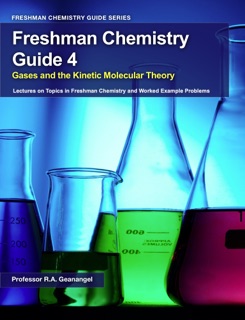This study guide contains over 4 hours and 15 minutes of recorded lecture topics and example problems that follow the material covered in chapter 5 of the textbook Chemistry, The Molecular Nature of Matter and Change by Silberberg. The topics covered include:
How gases differ in their physical properties from liquids and solids.
The definition of pressure and the measurement of gas pressure using a barometer or a manometer.
The gas variables and how they are related as demonstrated by Boyle’s, Charles’s, and Avogadro’s laws
How the empirical gas laws are combined to give the ideal gas law.
How to use the ideal gas law to determine gas density and molar mass.
The effect of temperature changes on the density of a gas.
Dalton’s law and the relation between partial pressure and mole fraction of a gas; its application to collecting a gas over water.
How the kinetic-molecular theory leads to the origin of pressure and the gas laws.
How molecular speed, average kinetic energy, and temperature are related.
The processes of effusion and diffusion and how their rates are related to molar mass.
Why intermolecular attractions and molecular volume can cause gases to deviate from ideal behavior at low temperatures and high pressures.












